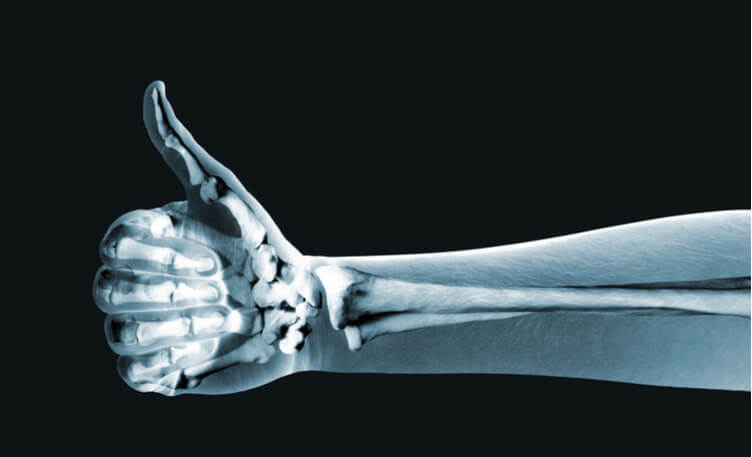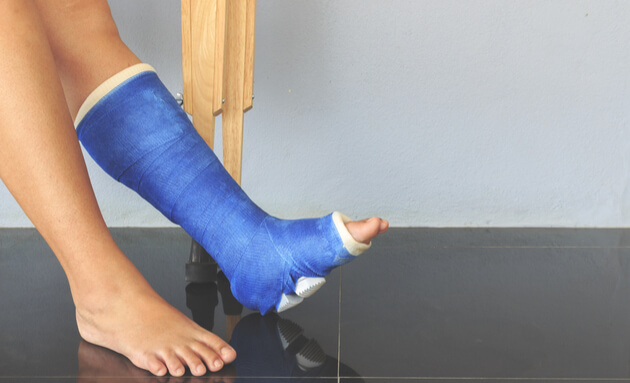Optimising the use of Bone Density Tests through FRAX Scores

Bone fractures are painful injuries that can be caused during high impact accidents. They generally occur when the physical force exerted on the bone during an accident is stronger than the bone itself, causing the bone to collapse or break.
One’s risk of suffering a bone fracture tends to increase with age. This is because the older you get, the more brittle your bones become. Ailments such as osteoporosis, that affect bone density and strength, can also increase one’s risk of bone fractures.
The Biology of Bones
Young kids and adolescents have growing bones which reach peak mass at about 25 years of age. This bone mass then remains relatively stable until 50-60 years of age, after which a decline begins. This decline in bone strength is especially marked in women after menopause, leaving them more susceptible to fractures.
Scientific research has contributed immensely to our understanding of what needs to be done in order to maintain strong, resilient bones. Today, there exist drugs that can slow bone loss and reduce fracture risk in individuals. However, in order for these drugs to be helpful, doctors should be able to identify weak bones in patients on time.

An Introduction to FRAX Scores
According to research data, individuals who have already suffered a fragility fracture once are at high risk of suffering another fracture sometime in the future. However, in reality, only about 20% of second-time fractures are prevented worldwide. This could be because the bone density test (BDT) that doctors use to estimate the density and fracture risk of a patient’s bones is expensive and not easily available. This can lead to a delay in treatment since most doctors will not initiate treatment for degenerative bone diseases like Osteoporosis without the means of a bone density report.
A FRAX score can be of help in combatting this challenge. A FRAX Score or a Fracture Risk Assessment Tool (FRAX) is a mechanism that doctors have been using for a long time now to determine one’s risk of an osteoporosis-related fracture. The tool takes into account factors such as the individual’s age, weight, gender, smoking history, alcohol consumption history, and fracture history to show their risk of fracture in the next decade.
A team of doctors at Medanta set out to understand how FRAX scores could be used more actively to optimise the use of a bone density test.

The Study - Can Frax Scores Further Optimise the Use of a Bone Density Test?
Through a retrospective study, the team checked the FRAX scores for hip fracture (FRAX-HF) and for major osteoporotic fracture (FRAX-MOF) of patients admitted at Medanta’s orthopaedic ward.
The doctors then suggested a certain range of scores and hypothesised the following:
- Scores beyond the upper limit:
If the patient’s FRAX score was higher than the set upper limit, the patient could be treated for weak bones without necessarily resorting to an expensive bone density test. - Scores below the lower limit:
If the score was below the given range, the risk of fracture is low and one could skip further investigation. Dietary changes and exercises are suggested in such cases. - Scores in the intermediate range:
For those with an intermediate score that lies within the range identified, a bone density test is prescribed.
The findings of the study proved this hypothesis by showing that most patients with a FRAX-HF score of less than 0.3 or a FRAX-MOF of less than 2 had a low risk of fracture. On the other hand, a FRAX-HF score greater than 3.5 or a FRAX-MOF score greater than 10.5 was high enough to initiate treatment without resorting to a bone density test.
The team was thus able to optimise the use of an expensive bone density test by limiting them to cases where they were really required. This not only ensures cost-effectiveness for patients but also facilitates treatment in areas where bone density tests are not available.
Analysing Your Own FRAX Score
Calculating your FRAX score is easy and can be done independently at home. So, on this World Osteoporosis Day, begin by calculating and accessing your FRAX score online.
Post entering your details, if your FRAX score for major osteoporotic fracture (FRAX-MOF) is less than 2 and if your FRAX score for hip fracture (FRAX-HF) is less than 0.3, you have a low risk of fracture. On the other hand, if your FRAX-MOF is greater than 10.5 or FRAX-HF is greater than 3.5, you have a high risk of fracture. It is advisable to meet an endocrinologist to discuss anti-osteoporosis medication that can help slow bone loss and reduce your risk for fractures.
At this stage, it is important that you take care not to fall. Most fractures tend to happen at home, especially in bathrooms, at the bedside, and on the stairs. It is also important to take care of your bones by consuming the recommended amount of calcium, protein and vitamin D in your diet. Avoid smoking and alcohol, and get sufficient exercise by walking every day.

And finally, it is important to remember that you might not always be able to make a definite judgment on the basis of this tool. It is advisable to visit an orthopaedic doctor, especially If your FRAX-MOF is between 2 and 10.5 and FRAX-HF is between 0.3 and 3.5, as they might require you to get a bone density test done in such cases.






